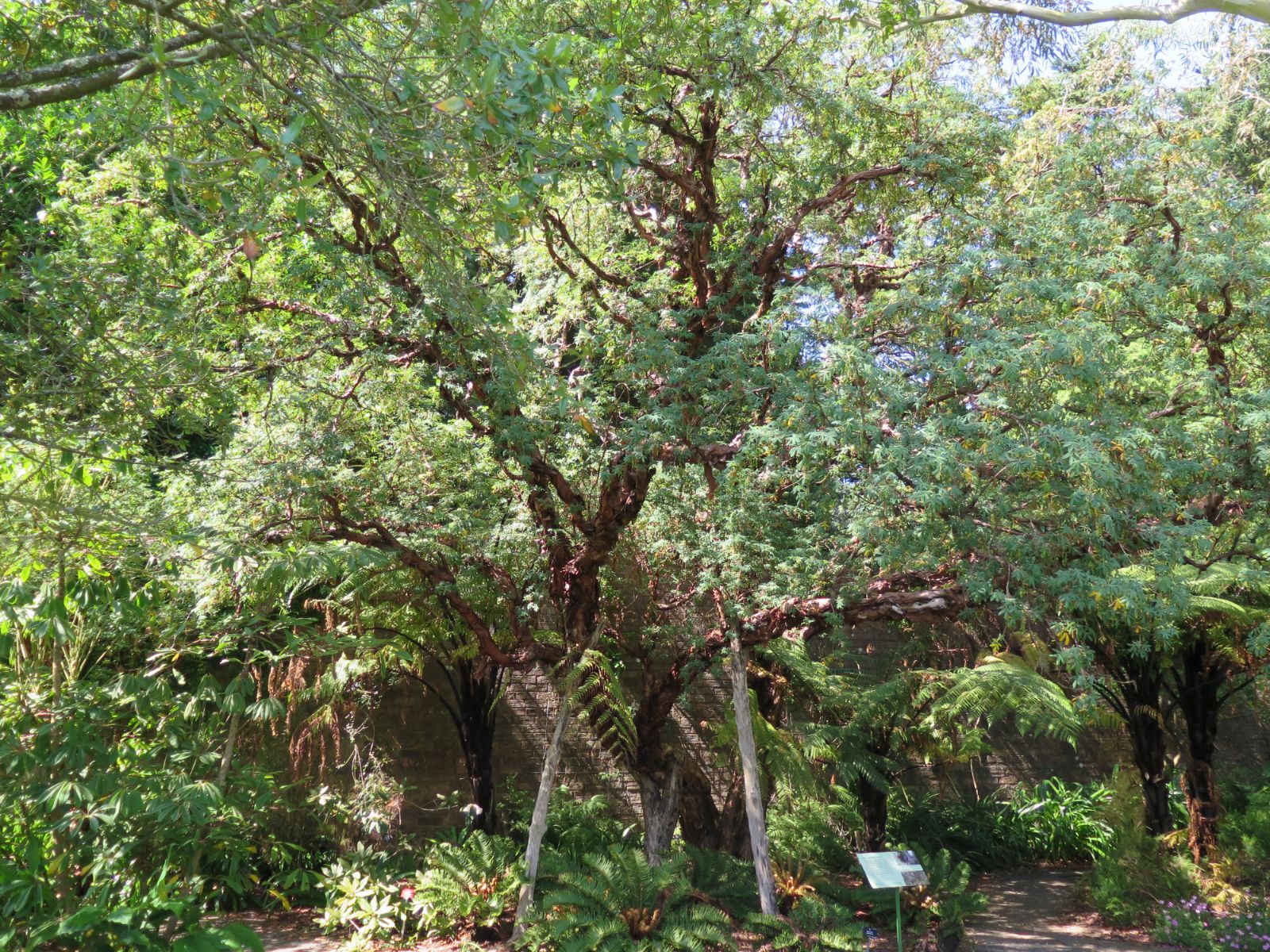Polylepis
Credits
John Grimshaw & Ross Bayton (2022)
Recommended citation
Grimshaw, J. & Bayton, R. (2022), 'Polylepis' from the website Trees and Shrubs Online (treesandshrubsonline.
Family
- Rosaceae
Fourteen species of Polylepis occur in the Andes (1800–5200 m asl), from Venezuela south to northern Chile and Argentina. They are deciduous or evergreen trees or shrubs with deep, many-layered red bark. The leaves are alternate and imparipinnate with one to nine pairs of leaflets. The leaflets have entire, revolute, crenate or serrate margins and are usually hairy below. Stipules are fused around the branchlets forming a sheath. The inflorescences are erect or pendent with 1–60 flowers. The flowers are hermaphrodite, 0.4–1 cm diameter with three to four sepals, no petals and 6–36 stamens. The fruit is an achene with spines, wings or other protuberances (Simpson 1979).
This interesting genus, which deserves further horticultural investigation, has a similarity to the East African Hagenia but is perhaps most closely related to the herbaceous genus Acaena (Helfgott et al. 2000). Ecologically, Polylepis is of particular interest as it contains the world’s highest-altitude woody plants, woodlands of P. tarapacana Phil. growing at over 5000 m in Bolivia. Only P. australis is known to be established in cultivation, but P. pauta Hieron. from Ecuador and Peru has been offered commercially in the United Kingdom in recent years. The Chilean P. tomentella Wedd. is another high-altitude species worthy of attention (Gardner & Knees 2004). It too has superb exfoliating bark.
The family Rosaceae contains several other woody genera with pinnate leaves, including Bencomia Webb & Berthel. and Dendriopoterium Svent., both from the Canary Islands, and allied to Sanguisorba L. (of which they have sometimes been considered to be woody members) (Helfgott et al. 2000). Of these, B. caudata Webb & Berthel. from Gran Canaria and Tenerife is cultivated at the Chelsea Physic Garden, London, forming a tall multistemmed shrub with attractive dark green pinnate leaves. Also in this remarkable garden is D. menendezii Svent., forming a bush with a dense canopy of beautiful glaucous leaves – a truly handsome plant that deserves cultivation wherever it is hardy. It was flowering well in January 2008, with panicles of small greenish flowers opening from pinkish buds.

